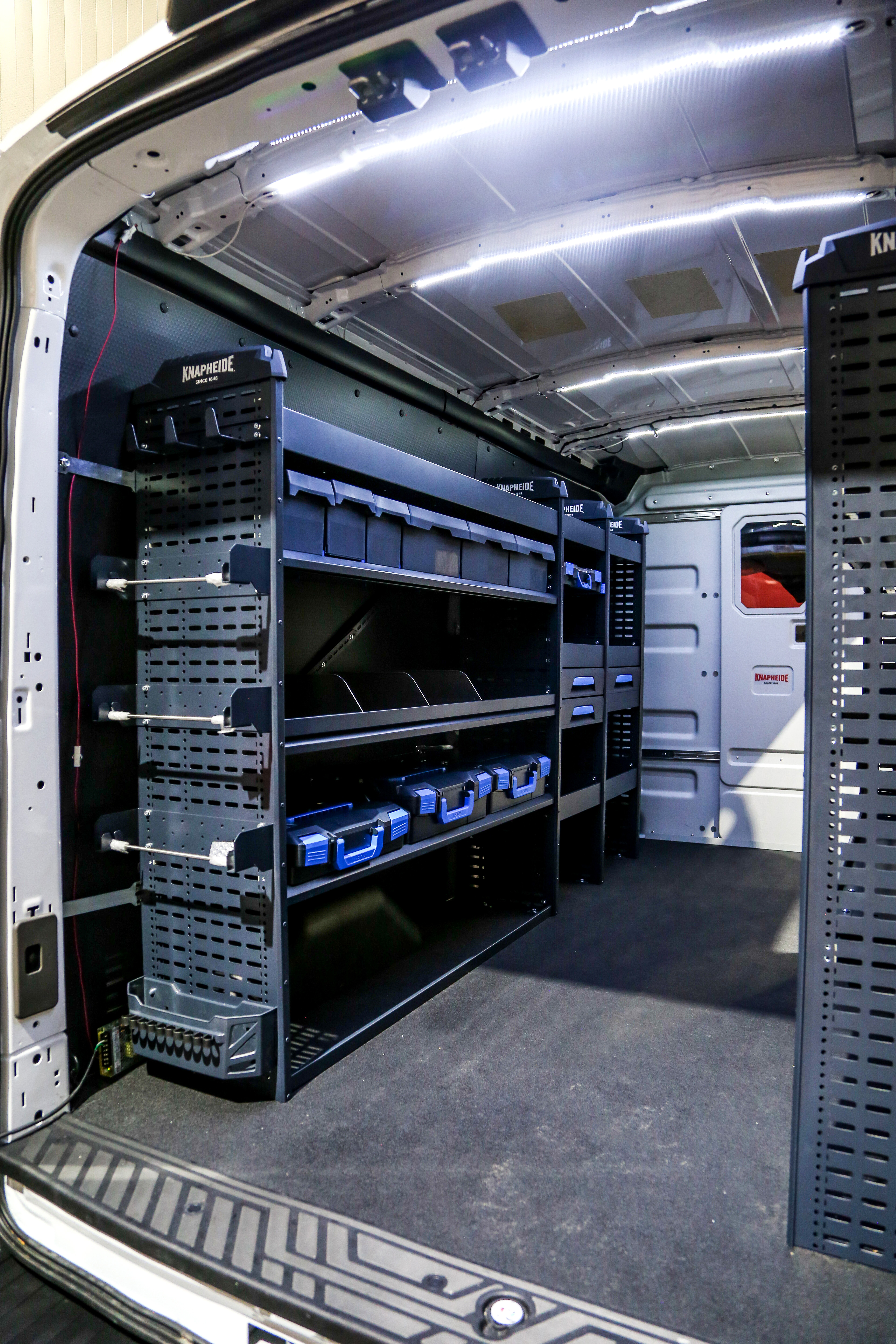May 3, 2022
SHARE
What is last-mile delivery?
With more and more companies adopting and guaranteeing fast shipping methods to get products to doorsteps as quickly as possible, you’ve likely heard the term “last-mile delivery.”
Simply put, last-mile delivery is the final leg of the journey a package takes to get to its final destination after moving through the rest of the supply chain process. Think of it as the postal service or a parcel delivery business delivering a product to your home you ordered only a couple of days earlier.
The rise of online retailers and big box stores promising customers two-day-or-less delivery methods has led to an equally fast rise in last-mile delivery services and businesses. Entities like the USPS and FedEx are now busier than ever (for better or worse) as they attempt to keep up with customer demand and the shipping/delivery expectations that have been set by these retail giants.

CHRIS ROLSEN
Director of Fleet and Sector Sales
Knapheide
“The trend for last-mile delivery really kicked into full gear during the start of the pandemic,” says Chris Rolsen, Knapheide’s director of fleet and sector sales. “Prior to that, it was something companies outside of Amazon, FedEx, DHL, etc. were exploring, but no one was making a big push into that space to compete on delivery.”
Rolsen notes that, during the pandemic, businesses quickly noted the shift from physical traffic to digital and no-contact transactions and had to make decisions on how to remain efficient and effective during an unprecedented time in our history.
“Once the pandemic hit, retailers were looking for better ways to get customers their products, be it groceries, clothing, or whatever the company was selling at the time,” Rolsen notes. “When retailers saw a massive drop in consumers making their way into their storefronts, they had to pivot to stay open, and that’s when a vast majority leaned heavily into the e-commerce space. The biggest boom in last-mile delivery appears to have been grocery delivery where we began to see countless companies pushing further into ‘touchless delivery’ for their consumers.”
The last-mile delivery space is witnessing unprecedented growth of roughly 15-20% CAGR (compound annual growth rate) which is projected to continue for the next five years. With this comes the biggest push in the next automotive evolution, electric vehicles, which more and more last-mile delivery companies and fleet management companies pursue to serve their needs.
Among other challenges facing these businesses and industries, climbing fuel costs and an equally rapid shift throughout the automotive industry could be considered a perfect storm for chaos as companies try to roll with the changes without getting left behind.
“These businesses are not immune to any of these struggles right now, including the lack of people,” Rolsen says. “The shortage of drivers is causing delays for the companies getting their products to customers. As the home delivery space increases, it is putting more and more demand on companies to provide quicker solutions for the customer. When you factor this in along with the rising cost of fuel and operating costs, consumers are the ones that seem to be feeling the effects of the price increases as demand remains high.”
KNAPHEIDE MEETS NEEDS

Knapheide Van Equipment offers a comprehensive lineup of equipment, van packages, and vocational packages.
So, what solutions can Knapheide offer to help those in the last-mile delivery industry meet the increasing demands and expectations of their customers?
“Knapheide has addressed this rapid growth by adding to our always-expanding Knapheide Van Equipment product lineup,” Rolsen says. “We continue to evaluate the needs of last-mile delivery professionals to look at creating more products geared specifically toward parcel delivery that helps the drivers from both a mobility and organizational perspective.”
This is a shining moment for Knapheide’s van equipment lineup as multiple industries shift to a more “get it quick” delivery model.
“The whole Knapheide Van Equipment lineup helps these companies operate efficiently and safely all while remaining cost effective to their customers,” Rolsen notes. “Knapheide works with customers to reduce safety hazards such as reducing the amount a driver gets in and out of the back of the vehicle. These increases in efficiency can lead to greater productivity by the driver.”
Rolsen encourages those who provide last-mile delivery to their customers to contact Knapheide to learn about the preconfigured and custom solutions that can be offered through Knapheide Van Equipment. He also notes that current Knapheide Van Equipment customers have noticed a difference in the efficiency of their drivers through the better organization and storage solutions provided by the product lineup, a benefit that is passed onto customers.
If you’re interested in Knapheide Van Equipment, visit vanequipment.knapheide.com to find your ideal storage solution.


